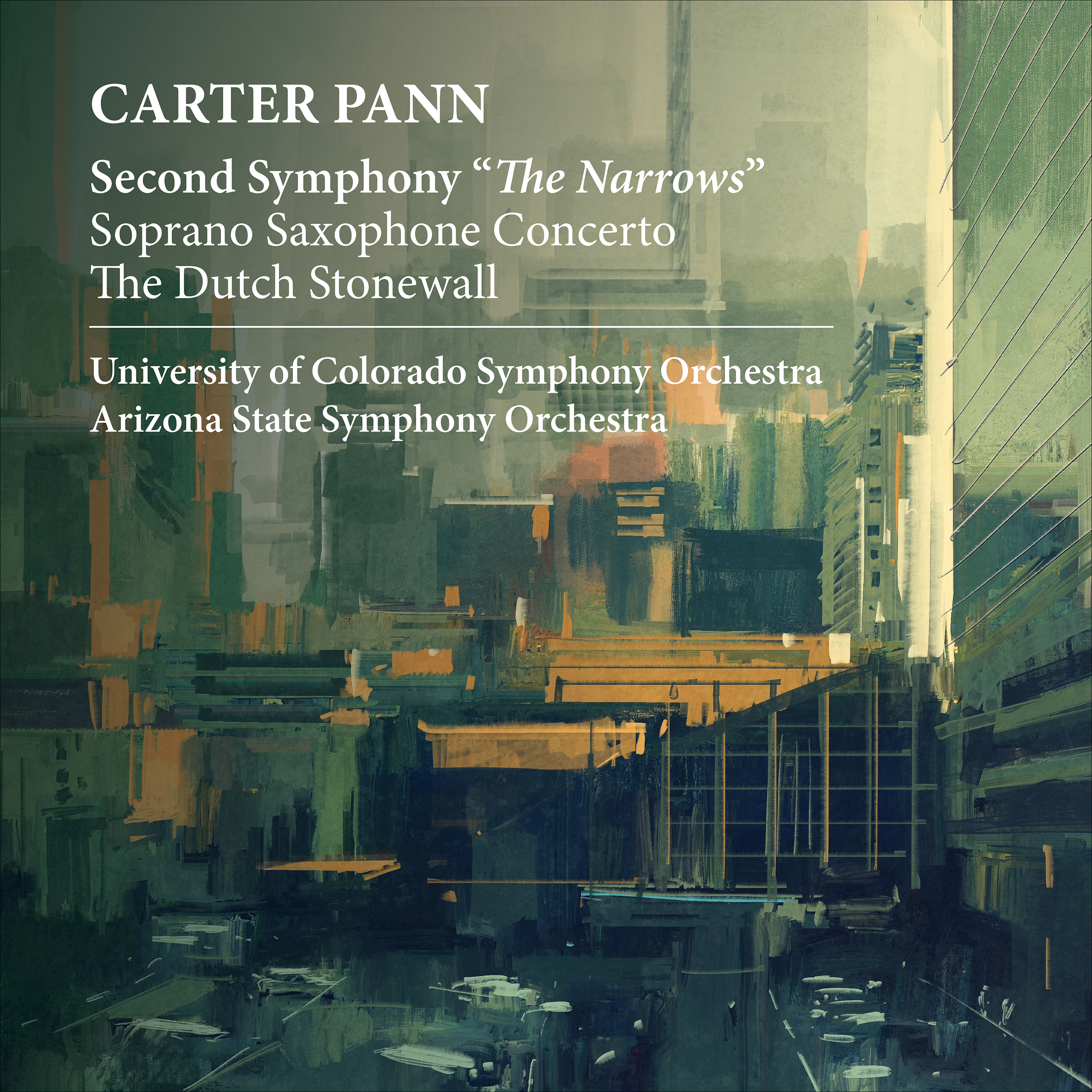My Soprano Saxophone Concerto (2019) was written for Christopher Creviston and commissioned by him, the ASU Symphony Orchestra, and the SUNY Potsdam Symphony Orchestra. The work lasts about 15 minutes and does what it can to show the many sides of one of my favorite musicians on the planet. The work is cast in four movements and makes use of a varied orchestral palette. I. The Old Line (orchestra without brass) presents the soloist almost immediately, akin to the technique in Mendelssohn’s beloved Violin Concerto. The saxophone weaves a song-like melody throughout, often reaching for the highest register of the instrument. II. Aria: Injurious Graffito (full orchestra) was the first movement to be written, inspired by a line in the old television series Frasier. I fell in love with the two words “Injurious Graffito” the way they are delivered on the show. The music, like the TV show, is lofty and somewhat arrogant. III. Jump (full orchestra) is a written-out improvisation on the saxophone. Chris is particularly adept at the leaps and quick changes found throughout the movement, which culminates in a straight-ahead tune incorporating shapes that foreshadow the tune in the last movement. IV. Hymn: A Love Supreme (string orchestra and harp) is a torch song of unabashed sentimentality. A surprising admission: I was not thinking of John Coltrane’s famed album of the same name when naming this last movement. Perhaps it was a subconscious decision.
The Dutch Stonewall (2013) was written for two of the most talented musicians I've come to know, Margaret McDonald and Alexandra Nguyen. The title is synonymous with a particular opening sequence in a chess game, however I am not referencing chess in this music. My attraction to the title is in its evocative stylistic implications. I'm talking about salty, angular harmonies... the kind of sounds I associate with modern Dutch music. As I am not Dutch this music will never be mistaken for that of a native – but some of the work was written while living in Germany with a Dutch friend months ago, and never did the image of a long and gnarled Dutch Stonewall leave my inner eye while writing this music. I fell in love with this image and wrote music inspired by it, some of which is hardened and ice-cold.
Written in an exceedingly remote place called "The Narrows," my Second Symphony (2017) took much of its inspiration from the cosseted beauty of a narrow corridor recessed in a thin crevasse cut by one of the Little Thompson River tributaries among the St. Vrain waterways north of Lyons, Colorado. This location, and what I have become since landing here is the stuff this music is about. The Narrows is a place between things. I cannot walk out my door and be somewhere already. It takes some doing to get anywhere from here. The internet is crippled and spotty at best. This is a beautiful but lonely place, and I must look at myself in less-than-flattering, plainly direct ways now. My vices are clearly apparent without entire populations of proximate friends or neighbors to help me justify them. I often worry about my health as a man in his forties living in The Narrows. It would take some time for any help to get here.
One cannot travel the two-lane highway through The Narrows without being confronted by the myriad of shrines placed by families along the road as memorials to all who have either crashed or slipped off the road into the deep ravines. It was while visiting all of the shrines up close (nearly 25) upon moving to the area that I was compelled to compose a musical image of both the secluded beauty and sheer treachery of this place in which I now reside. The pleasures here are rich, but they come with an unspoken warning.
- Carter Pann



